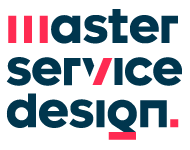Workshop two focused on e-services in the health care context, which in many ways seemed an uncomfortable fit. Specifically, our group were tasked with the role of eliminating distraction for the nurse who is at the centre of communications in this setting. Answerable to doctors, patients and relatives, on top of the demands of their own role, the nurse is pulled in all directions at any point in time. Unsurprisingly, in the initial concept phase we found ourselves grappling with two issues; the true value of the e-solution in an environment that necessitates human contact, and the fact that the addition of further devices is likely to add to the already meta distractions. I suspect cost saving may well be a top priority here, but I can’t help but wonder if this measure, which may save money in the short term won’t create a greater cost outlay in the longterm, and not just for this industry but many others. And yes, while there are many instances where technology is a saviour, maybe there’s a point of saturation beyond which the loss starts to outweigh the gain. And that the distraction only adds to the distraction.
Blue sky research exploring distraction in other contexts unearthed, not technological solutions, but self-management practises, because as you might expect in the era of gagetitis, there is a corresponding epidemic of distraction. In all kinds of work environments and roles, from engineers to pilots, a compulsory ‘quiet time’ (a dedicated period of time to work without emails, phone calls, alerts, etc) was being implemented to create periods of time free of distraction. This measure was found to increase productivity and output. The absence of the regular technological appendages seemed to jolt us back into a place of self reliance and perhaps even self discipline. Whilst eradicating the secondary noise evoked a starkness, prompting a space to breathe and to create.
This unholy alliance of technology and healthcare, however is doubly questionable in an industry where the human element is answering not one direct need, but a thousand indirect ones owing to the nature of the service. As just one example, when the relative asks the nurse the time the doctor / consultant is due, they aren’t merely asking for the specific time, but for a thousand reassurances that can only be provided through human contact. They are asking for presence and attention in the face of crisis and stress. They are creating downtime to escape fear and the present; all healthy and necessary reactions to make it through all the stages asked of them in those moments. Providing the same information via a tablet that a relative can pick up and scan isn’t answering that need. It’s answering a simple question and between the two lies a murky world, but a world no less.
Everywhere more and more technological options are cropping up eliminating the human element. An element that can never be replaced, and the cost of doing so in certain industries in particular is untold. I seriously wonder if it won’t create more problems from the consumer perspective and experience. Facebook hasn’t replaced a human conversation and there is no solution to addressing that need, beyond addressing that need. Human beings are emotional beings, and there are limitations to evoking a response that makes us feel cared for that doesn’t involve contact with our fellow humans. As time moves forward in this masters, I grow increasingly convinced that the answer isn’t always in an app, and that despite it being a time-friendly solution that can be developed in nano-time for the purposes of a few days coursework, the real world is an entirely different reality. At the heart of services is human contact; the greatest, most memorable and impactful touchpoint. And how we feel, post-service, equals the stuff of conversion into a positive or negative outcome for a business. So maybe, there is something to be said for putting the human back into business and integrity back into relations. I’m willing to bet that the pay off will be significant.

